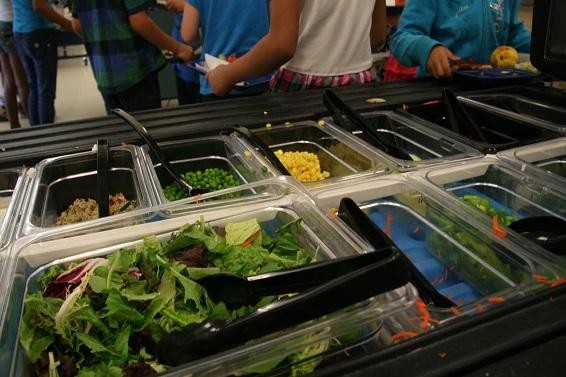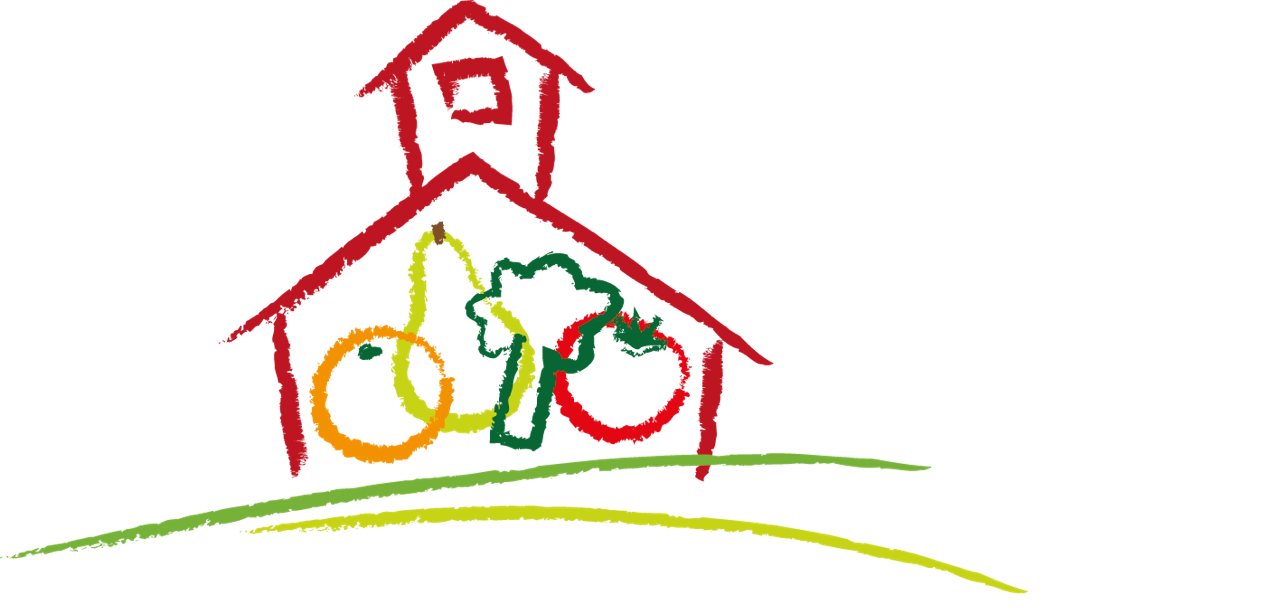Salad Bar Leads to Bright Futures at Cardinal Ritter

An interview with Misti Figueroa, Food Service Director
When Misti Figueroa made the career switch from restaurant chef to Food Service Director for Cardinal Ritter High School in Indiana, she discovered the lunch menu was, well, “simplistic” at best.
After years of being a professional chef, she felt there were not nearly as many fresh ingredients in the school kitchen as there could be, even on a much stricter budget. She realized certain improvements could be made to the meal quality, and thinking that the community would agree, she sent out a survey to students and employees: What do you like about school lunch? Do you have any suggestions for improvements?
The votes poured in, and the consensus was clear: Cardinal Ritter needed a salad bar.
A friend from a local high school forwarded Figueroa the Let’s Move Salad Bars 2 Schools application, and not long after, the salad bar arrived.
The reaction was overwhelmingly positive; students & staff alike were helping themselves to the tasty fruit and vegetable options in no time.
Positive Transition
Figueroa is now in her fourth year as Food Service Director for Cardinal Ritter.
Her restaurant experience had primed her to expect fresh, healthy ingredients, but when she arrived, 90% of the school lunches were processed, with a few apples, bananas, and baby carrots for balance. All of the other fruits and vegetables were canned.
These days however, thanks to Figueroa’s reform attempts, the school food is roughly 40% fresh, and 60% processed; the salad bar is a significant component of the drastic improvement.
● Number of kids served at CRHS: 633
● Change in lunch participation since salad bar implementation: 20% increase
● Percentage who are eligible for free and reduced meals: 35-40%
● Kids’ favorite salad bar items: Tomatoes, hard boiled eggs, shredded carrots, jalapenos
The planning and preparation for the salad bar was integral to the program’s success, and the most significant opportunity for improvement lay in staff training.
Professional Development
“Extra staff members have been hired specifically for prepping, refilling, running and cleaning the salad bar daily. These employees have been trained in food safety, produce handling, and proper food storage procedures.”
The salad bar was a new frontier: managing expiration dates, labeling, dealing with the board of health standards, and (most importantly) keeping food fresh. Thankfully, the wonderful Cardinal Ritter staff was willing to learn, and it was a smooth ride.
Keeping It Fresh
“We rotate our vegetable and fruit options within a three-week period. This helps the students keep the interest in the fresh fruits and vegetables. They do not have a chance to get tired of anything, as we are always offering new and fresh products.”
The salad bar ingredients are prepared fresh every morning. The food service staff slices and dices tomatoes, broccoli florets, carrots, jalapenos, mushrooms, red onions, radishes, beets, ham, and turkey for the students.
Understanding the crucial importance of checking in with the people actually eating the new food offerings, Figueroa regularly surveys the students and teachers to gather feedback. Were they looking for a different vegetable or topping? Figueroa had it covered.
School food reform is about more than nourishing ingredients on a plate. It’s about helping voices be heard and tapping into the power of participation.
Location, location, education
Upon walking into the school cafeteria, the salad bar catches your eye immediately. Sometimes, figuring out the most fitting placement involves some trial-and-error.
“It’s very visible, which helps. When they’re [students] walking into the cafeteria to go to the lunch line, they walk past the salad bar.”
Figueroa marketed the salad bar before it debuted: she sent out snail mails and emails to the families of students announcing its upcoming arrival. She posted it to the school’s website, Facebook, and Twitter.
Figueroa ensured the school promoted the salad bar and good eating habits with posters around the building. She also regularly posts pictures of students eating off the salad bar, adding an exciting interactive factor into school lunches.
Opening minds and mouths
Figueroa has a unique relationship with her students: she’s not their boss or source of discipline, she’s their friend. She doesn’t lecture about nutrition or food safety – she opens a conversation. And they listen closely.
When it came time to educate the students about the salad bar, Figueroa took the total transparency approach. She discussed not just the nutritional importance of daily fruits and veggies and why the bar was being added, but also described the finances surrounding the operation and fiscal requirements to maintain the bar. The students were interested, and eagerly responsive.
Going Beyond the Salad Bar
Before the salad bar, those students on free and reduced-price meal plans could only eat the hot meal – which was a limited option. Didn’t like hot dogs? Looks like you wouldn’t be eating lunch that day. Figueroa took care to ensure that lunches created from the salad bar would cover all the nutritional requirements, be fully reimbursable, and provide a daily alternative to the hot meal. Now, the salad bar is included as part of all reimbursable meals, and it serves as a fully reimbursable meal due to lean proteins and whole grain crackers being available on the salad bar.
When opportunities for healthy eating may not be available at home, salad bars add to the nutritional quality of children’s diets. This is a major win for the next generation; students realize salad can be healthy and yummy.
Figueroa has provided an excellent, real-time model for ways knowledge of different food options can be a huge education opportunity, especially for lower income students. Talking to the students personally, educating them in the classroom, and displaying new foods on the salad bar gets through to the students through all possible avenues.
The students love the options, but more importantly, they’ve changed the way they view food altogether. By engaging the students individually, Figueroa personally ensures each student is educated about what food enters their growing bodies.
When we teach our kids how easy and important it is to take an active stance regarding their personal health – we prepare them for a better, more engaged, more nourished future.
